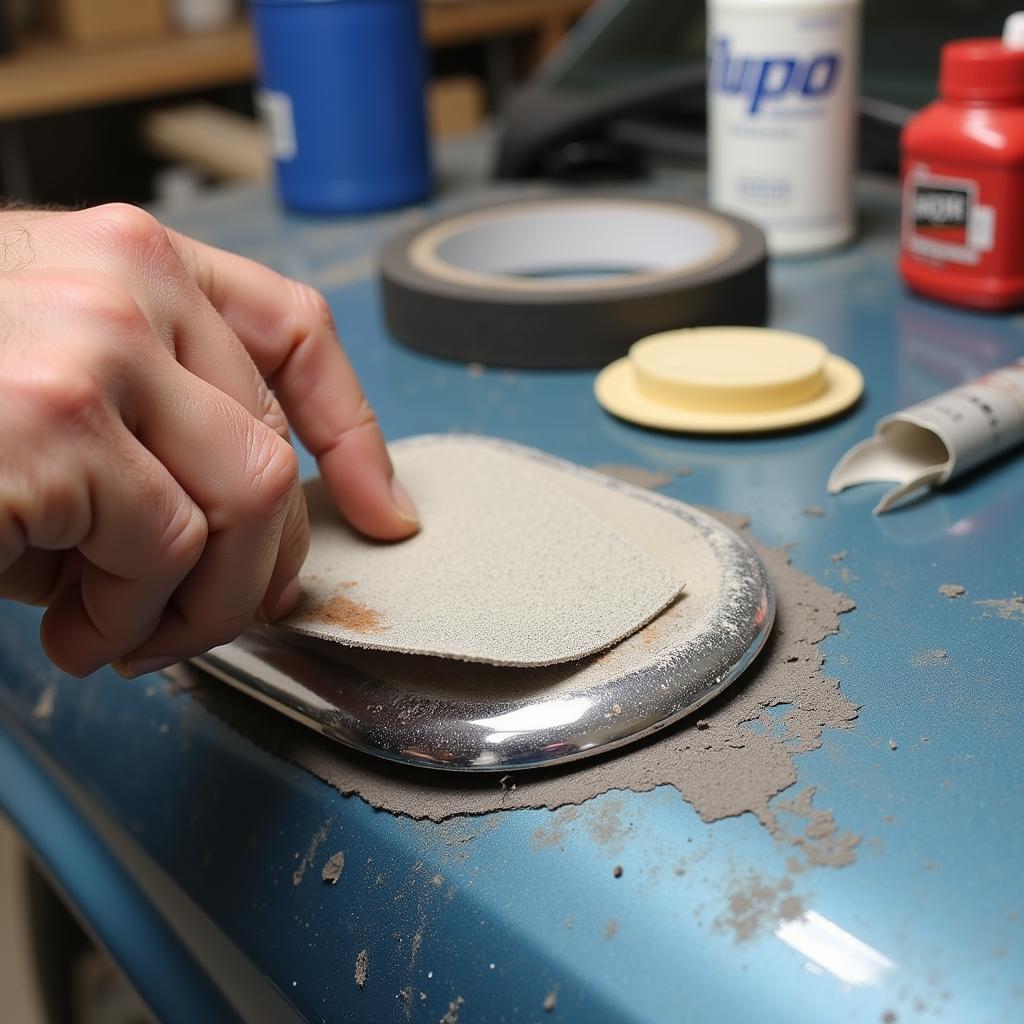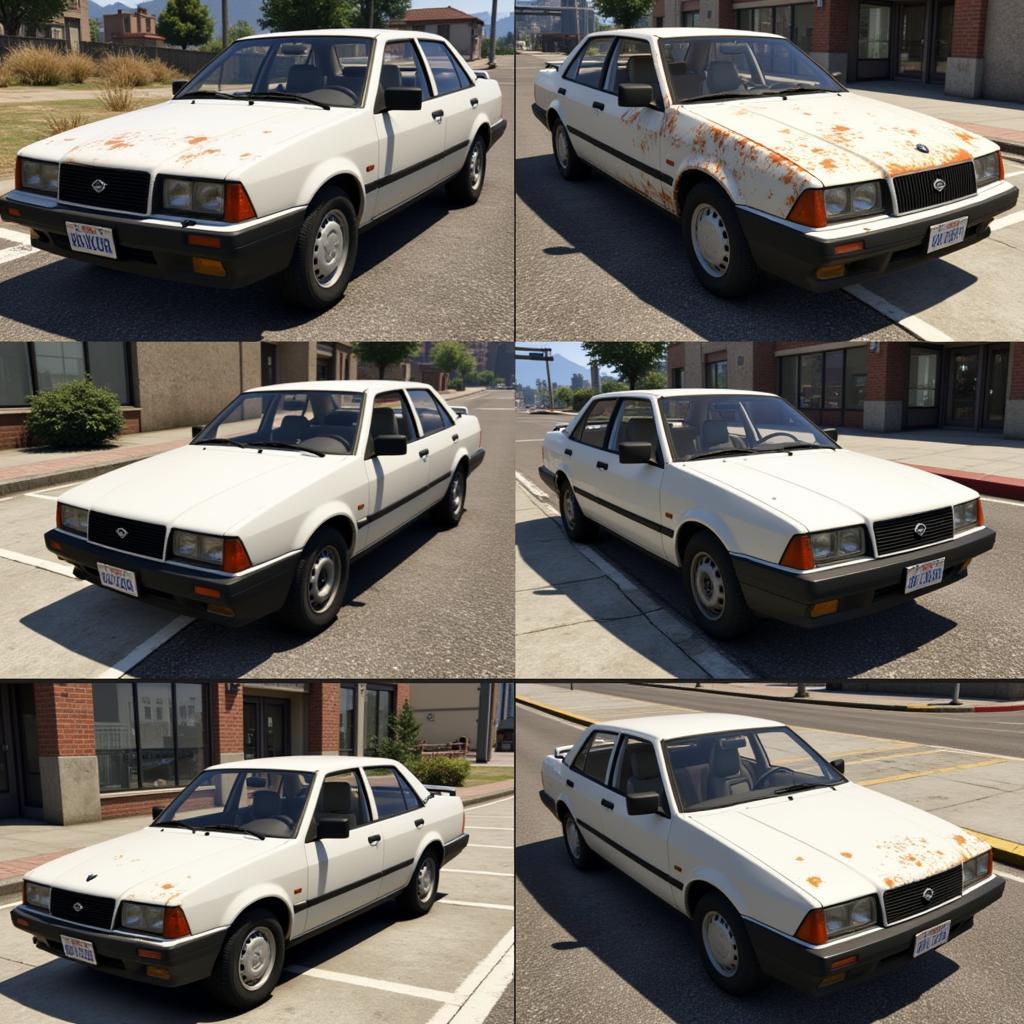Fixing a booster seat in your car can be a tricky business, but it’s crucial for your child’s safety. Whether it’s a loose installation, a broken part, or just general wear and tear, understanding how to troubleshoot and fix these issues is essential for any parent or caregiver. This guide will walk you through common booster seat problems and provide practical solutions for how can you fix booster seat in car.
Common Booster Seat Problems and Solutions
Booster seats are designed to elevate your child so that the vehicle’s seat belt fits them properly. A poorly fitted booster seat can compromise your child’s safety in an accident. Let’s explore some typical issues you might encounter.
Loose Installation: The Wobble Test
One of the most common problems is a loose installation. A wobbly booster seat can be dangerous. Perform the “wobble test” by pushing the booster seat side-to-side and front-to-back at the belt path. If it moves more than an inch, it’s too loose.
-
Tighten the Seat Belt: The simplest solution is to tighten the vehicle’s seat belt that secures the booster seat. Pull the shoulder belt all the way out, then feed it back in slowly while pressing down firmly on the booster seat. Make sure the belt retracts completely and locks.
-
Use LATCH (Lower Anchors and Tethers for Children): If your vehicle and booster seat are LATCH compatible, use the lower anchors to secure the base of the seat. This often provides a more secure fit than the seat belt alone. Remember to consult your car and booster seat manuals for proper LATCH installation.
-
Check for Obstructions: Make sure there’s nothing underneath the booster seat or interfering with the seat belt path, like thick floor mats or cargo.
Broken or Worn Parts: A Safety Hazard
Over time, parts of your booster seat can break or wear down, especially with regular use.
-
Check the Straps and Buckles: Look for frayed straps, cracks in the plastic, or difficulty buckling and unbuckling. If you find any damage, contact the manufacturer for replacement parts or consider buying a new booster seat. Never attempt to repair a broken strap yourself.
-
Examine the Frame and Base: Check for cracks or damage to the plastic frame or base of the booster seat. A compromised frame can significantly reduce the seat’s effectiveness in a crash.
-
Contact the Manufacturer: If you are unsure about the integrity of any part of the booster seat, contact the manufacturer directly. They can advise you on the best course of action.
Incorrect Positioning: Belt Fit Matters
Even a properly installed booster seat can be unsafe if it’s not positioned correctly.
-
Shoulder Belt Placement: The shoulder belt should lie snugly across your child’s chest and collarbone, not on their neck or face. Adjust the booster seat’s height if necessary.
-
Lap Belt Position: The lap belt should fit low across your child’s hips and upper thighs, not on their stomach.
-
Head Support: Ensure your child’s head is properly supported by the booster seat’s headrest, especially if they fall asleep during car rides.
How to Find the Right Booster Seat for Your Child
Choosing the right booster seat is just as important as installing it correctly. Consider your child’s height, weight, and age. There are two main types of booster seats: high-back and backless. High-back boosters provide head and neck support, while backless boosters are more portable.
“Choosing the right booster seat isn’t just about picking the coolest one. It’s about ensuring it fits your child properly and provides the necessary safety features,” says Sarah Miller, a certified Child Passenger Safety Technician.
“Remember, the goal is to make sure the vehicle’s seat belt fits your child correctly. The booster seat is just a tool to help achieve that.” adds John Davis, a leading car safety expert.
Conclusion
Knowing how can you fix booster seat in car is essential for keeping your child safe. Regular checks and proper installation are key. Remember to consult your vehicle and booster seat manuals for specific instructions. If you have any doubts or concerns, contact the manufacturer or a certified Child Passenger Safety Technician for assistance. We at AutoTipPro are always here to help you. Feel free to reach out to us at +1 (641) 206-8880 or visit our office at 500 N St Mary’s St, San Antonio, TX 78205, United States.
FAQ
- How tight should a booster seat be? It should not move more than one inch side-to-side or front-to-back at the belt path.
- When can my child stop using a booster seat? When they outgrow the height and weight limits of the booster seat and can sit comfortably with the adult seat belt fitting correctly.
- Can I use a used booster seat? Yes, but ensure it hasn’t been in a crash, has all its parts, and isn’t expired.
- How do I clean my booster seat? Follow the manufacturer’s instructions. Generally, mild soap and water are safe to use.
- Are there different types of booster seats? Yes, high-back and backless boosters. Choose the one that best suits your child’s needs and your vehicle.
- Can I install a booster seat in the front seat? It’s generally recommended to install booster seats in the back seat, which is statistically safer.
- Where can I get my booster seat inspected? You can find a certified Child Passenger Safety Technician in your area through various online resources.






Leave a Reply